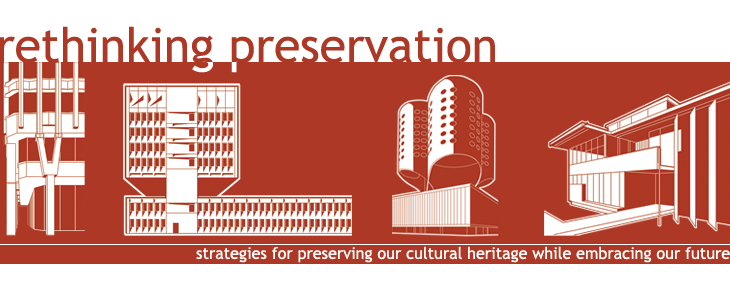 Is modernism inaccessible to the general public?
Is modernism inaccessible to the general public?In a recent article Marty Hylton, assistant professor at the University of Florida, broaches this subject. Mr. Hylton hypothesizes the lack of ornamentation or even the social agenda associated with parts of modernism may be off-putting to some people, leading to public apathy toward saving these buildings. While these may be symptoms, I don’t believe these are at the core of the problem. But then Mr. Hylton brings up a point I can fully agree with: “a mistake that champions of modernism make in attempting to preserve the buildings of the 1950s and ‘60s is that often a building’s architectural significance is promoted above its social and cultural importance.”
This is all too true and probably for several reasons. First, buildings of the recent past (even more than those of today) often contain conceptual ideas and material experimentation that paired with the many architectural theories of the 20th century. It was a time when architects moved with waves of thought and theory. Agendas were manifested in the design of buildings. Its variety was unlike any preceding, and such organization and ideologies have long since dwindled. But we design today with the knowledge of these past theories and the many physical aspects that came out of them: from open-planning and free columns to curtain walls and cantilevers. Historians and practitioners are still assessing the impact of this era that produced some seventy percent of America’s current built environment according to the government services administration.
But if the general public is to back the importance of these buildings as historians and practitioners do, we must make their preservation accessible, beyond the physicality and the entrenched theories of architecture. These buildings were made to produce public effect – to enhance human experience and engage the technology of the day. They must be analyzed not only for their history but for how they operate today in their current environments. Their survival depends on the engagement of history as well as their ability to continue contributing to the built environment.




No comments:
Post a Comment